How did the Students Cope with the Disruptions in Learning and Life Around Them?
It has been more than a year since campuses were compelled by the COVID-19 pandemic to close their doors to their students and resort to remote teaching. Since few universities and even fewer colleges had a Learning Management System (LMS) in vogue, choices of the tool, technology, medium, and platform were largely left to the teachers to manage to the best of their abilities. The result was a wide variety of ways in which the teaching-learning processes were carried on. Students, though more tech-savvy and better equipped to guide the transition, hardly had a say in the matter and they remained largely at the receiving end. Not only did their chosen and settled ways of learning get disrupted, their lives and the lives of people around them too got tossed into the turbulence.
So far, three distinctive sets of students have had nominal to total exposure to technology-mediated teaching. These comprised, firstly, those who had completed most part of their studies on-campus when the pandemic hit last year. They had tasted the technology for only a few weeks and were exposed to the modish medium and the voguish ways the world of knowledge had changed to. These Notionally Off-campus (NOCs) batches graduated during the summer of 2020.
Also Read: Salute to the Class of 2020
Then there were those who were compelled to go off-campus for a substantial part of their programmes of studies. This set of students began their tryst with conventional on-Campus mode but had to go off-campus for the rest of their programme duration. They have been on their campuses, seen facilities, made friends, and were excited about benefiting from the wide array of opportunities that campus life provides to the young minds and talent until the coronavirus threw their lives out of gear. Most of these Substantially off-Campus (SOCs) would be graduating this year or the year next.
The worst-hit were those who took admission when the pandemic had already set in. They had preferred on-campus life, even though they had plenty of opportunities and reason to get through distance, open, online, and virtual modes. It was to their chagrin that they had to be saddled and satisfied with the remote learning. They have not been on their campuses at all, except for some who came to write their entrance examination or to complete their admission formalities. They have not met their teachers or seen the library, the labs, the learning climate, the openness and vastness that the campus life generally promises. Their school friends have now dispersed across many different programmes in a wide variety of higher educational institutions and they have had no opportunity to make new friends. Ever since they took admission, the pandemic situation has gone from bad to worse. These Totally Off-Campus students (TOCs) may end up completing their qualifications without ever being able to try, test and taste a campus life.
Also Read: Calibrate Crappy Education in COVID Aftermath
Three distinctive sets of students have had nominal to total exposure to technology-mediated teaching: Notionally Off-Campus, Substantially Off-Campus,and Totally Off- Campus.
Within each of these categories, individual students were found battling with different kinds of struggles and coping with the befalling challenges. The overarching tones of thoughts for most students were that of despair, helplessness and uncertainty. The NOCs graduated in an extremely unpredictable environment that they had never experienced in their lives. Placement season indeed is generally a time of immense anxiety for students, and the pandemic magnified their anxieties manifold due to the job market uncertainties that it precipitated.
Strict lockdowns, while saved lives, severely restricted mobility and adversely impacted hirings to a large extent. Students aiming for attaining higher education were stopped in their tracks as well. The pandemic delayed academic sessions and postponed admissions. Mobility of students within their nation and more so internationally took a hit initially due to travel restrictions and later because of the scare of the pandemic. Loss of revenue further forced universities across the world to severely cut down on student scholarships, limiting equitable access critically. Further, a large proportion of the students were suddenly faced with a responsibility to earn a living to support and sustain their families in the wake of the failure of smaller businesses and firing from larger ones. Luckily, they had their network of friends and support to share and discuss what they were going through, which allowed them to mitigate their anxieties and sufferings greatly.
Also Read: 2020: A Year of Shambolic Education Burdening Learners
A large proportion of NOCs were suddenly faced with a responsibility to earn a living to support and sustain their families in the wake of the failure of smaller businesses and firing from larger ones.
The SOCs, on the other hand, were suddenly plunged into the strange world of zoom calls, Microsoft team, CISCO Webcast, Google meet, and Google classrooms. The administration and faculty faced a tradeoff between perfecting their method of online education or continuing their classes with minimal disruptions. Taking time to adjust to the online method meant recalibrating the semester timeline often delaying exams, semesters, internships, placements, and graduation. To avoid that, students and professors alike dove headfirst into the online classrooms, not realising that the students needed adjusted course requirements and expectations. For the average student, taking a three-hour exam in a classroom was a completely different ballgame than taking the same three-hour exam punching keys on the screen. Things were particularly difficult for those who did not have access to larger screens for learning and were dependent on the little slippery devices called mobiles and smart-phones.
Taking a three-hour exam in a classroom was a completely different ballgame than taking the same three-hour exam punching keys on the screen
Also Read: Time to Rethink and Reform the Examination System
As the pandemic prolonged from weeks to months and then to over a year with its threats still looming large, the teaching continued remotely. However, stakeholders learnt and adjusted to the new climate. As a result, newer and creative methods of assessments came into being, making it somewhat easier and convenient for students. But there was no denying the fact that learning was seriously compromised. The virtual labs were never as enticing as doing the practicals in the lab – the touch and field of the instruments, consumable and being in the company of the peer. The online internship, a common alternative to the experience in the corporate settings, deprived them of the opportunity and excitement of meeting people, creating networks and pursuing the careers that they wished to follow in the future.
The remote interaction denied students the thrill of being in a group setting – the feeling of nervousness and palpitation in asking the first question in the class; the shock of being countered by a peer or the teachers; the acclaim you get for your quality intervention. There indeed was a significant loss of learning. They lacked social interaction and missed the fun of being in the college canteen and cafeteria and the ever-stretching, never-ending commentaries on the teaching styles, language, communication abilities of their faculty and in the process, practicing critique of style and culture. Luckily, the SOCs had made friends while teaching was still on campus and lessened their anxieties by sharing them.
TOCs are yet to set their foot on their campuses. They hardly know their teachers and tutors and have seen their peers only remotely. They are also surrounded by all kinds of uncertainties, fears, miseries, and sufferings.
Also Read: Work-life balance of teachers in digital learning environment
The worst affected are the TOCs. They joined higher education after COVID-19 had already redefined the world. Two semesters have since gone by and they are yet to set their foot on their campuses. They hardly know their teachers and tutors and have seen their peers only remotely. They are also surrounded by all kinds of uncertainties, fears, miseries, and sufferings. Hardly have so many young people seen so many tragedies around them in such a short period of time. And yet they were expected by their institutions and teachers to focus on their studies; be ready to write their assignments and report and to take and do well in their examinations. A few spoke about mental health-related issues but hardly enough was done to really understand and ameliorate their anxieties.
The students, on their part, felt anxious about their careers and future – what to plan? How to plan it? Whom to seek support from? At times, they struggled to suppress their emotions and anxieties about the well being of their loved ones. Most suffered silently, in their own isolation, with no one around to ask what their moodiness and sulkiness was all about? Indeed most have their parents or guardians, but what do they know about the anxieties of this generation? The best they can do is to sermon and peroration but who needs those? Having a support system in one’s peer group is something that defines the university experience. Graduating from their schools, students enter the university space expecting to experience the power of discussion sessions, interaction and group studies. Ideas and research questions hardly ever appear out of thin air. It is the invigorating discussions and the exhilarating discourses that give birth to the most important explorations. Alas, many TOCs are about to complete their qualifications without experiencing any of these.
Also Read: Don’t Compromise on Quality Education While Formulating Contingency Plans
Students belonging to the different sections, strata, and segments of the society were impacted differently. Many of them without clean and safe drinking water and electricity shuddered with the thought of access to the needed bandwidth and high-speed internet connectivity.
The equity too has been a big casualty. Students belonging to the different sections, strata and segments of the society were impacted differently. Those with means and social endowments learnt better and more, simply because they had better access to devices, unlimited data and network. Many such students found an opportunity in this adversity to use their time, skill and opportunity to take add-on knowledge and skill enhancement courses to compensate for their loss of learning. Some could also do multiple paid winter and summer internships online to part-finance their higher education. Relatively speaking, such students were few and far in between. The bulk of about 40 million students in our higher education come from rural and remote areas with many disadvantages; they lack affordability and endowments to guide and support their learning. Many of them without clean and safe drinking water and electricity shuddered with the thought of access to the needed bandwidth and high speed internet connectivity.
Also Read: Ensuring Education to Poor in Post-Pandemic Era
The structure of the society ensured that female students were additionally burdened with household chores, undermining the importance of their education. Households with more heads than devices with internet access had no choice but to take turns, hence frequently missing classes. Most do not even have a decent private space of their own to attend their classes in some quietude. It is this segment of the students that felt the added burden of earning a living to support and sustain their families compelling them to compromise their time and resources for their education. Yet these are the social and economic groups that needed better learning opportunities. They were vulnerable even when there were no adversities. Alas, they have become all the more susceptible to vagaries caused by the pandemic and also by the strategies that were implemented to handle it.
With the promise that all who need to be vaccinated in India shall get vaccinated by the end of the current year, it may be hoped that the universities and colleges would soon be able to welcome their students on their campuses. Universities have had the tendency to bounce back to their usual self and it may be hoped that the same would happen this time as well. Technology can be least expected to replace the teachers and the on-campus teaching-learning-research process irrespective of what the technology enthusiasts and touts may predict the future of higher education to be.
Also Read: Technological Transformation in Higher Education: Myths and Realities
Notwithstanding the tribulations that the students and the faculty faced in experimenting with the technology, chances are that they would want to continue using them even when the campuses come live face to face. They would want to continue sharing print, audio and video materials to supplement their lectures to make students learn better. At times they may also want to continue meeting online and also engaging in certain activities through the medium of technology which can be leveraged for ensuring quality and promoting excellence in higher education. After all, this online medium of learning has allowed universities to invite academicians and scholars from across the world, giving students a chance to interact and learn from them. There is no denying that such frequent collaborations were extremely difficult, not to mention costly, to design when learning was physical. This is just one of the many examples of how universities can use this pandemic as a learning experience.
What higher educational institutions and their funding agencies could do is to invest heavily in upgrading their technological infrastructure including an integrated learning management system. The infrastructure upgrade could come in handy for capturing and digitising the knowledge that is transacted into the classroom and thus develop a rich repository of intellectual property. This would, in turn, help India position herself as a dependable producer of knowledge as opposed to being just a consumer thereof. God forbid, if the fear of pandemic persists even beyond December this year, this technological upgrade would enable universities and colleges to use technology better for the quality teaching-learning process.
Disclaimer: The views expressed in this article are of the authors solely. TheRise.co.in neither endorses nor is responsible for them.

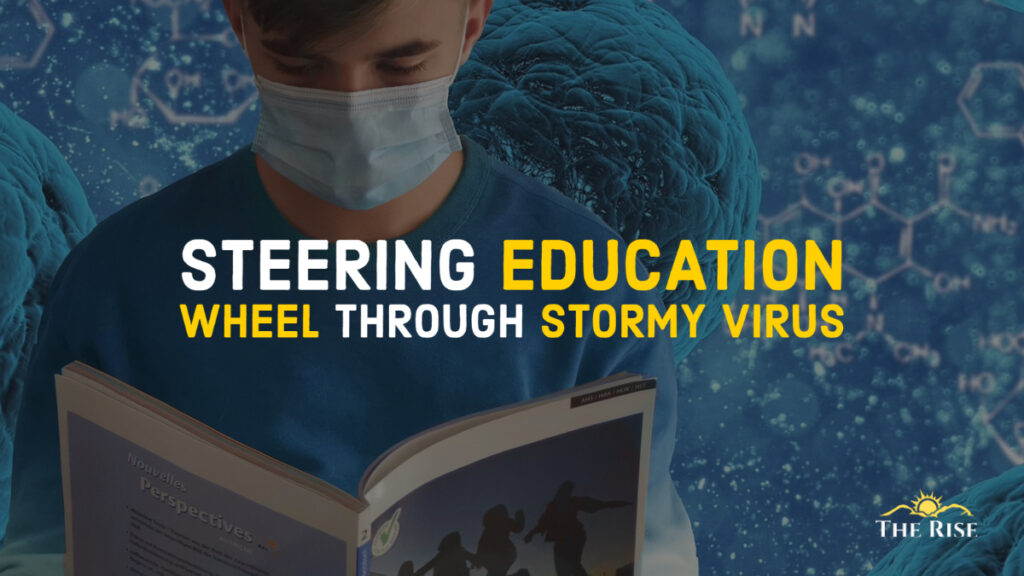


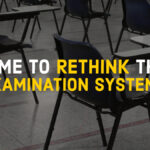
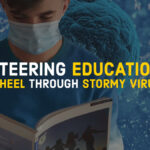


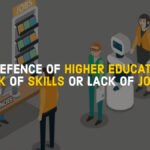


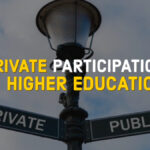



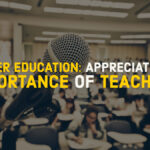
























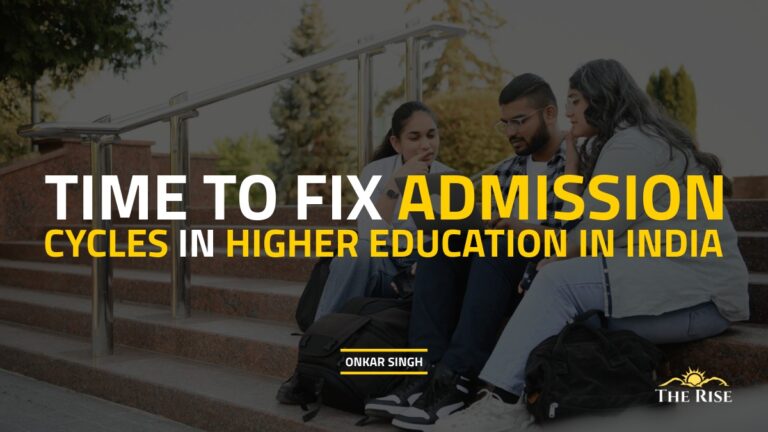

Pingback: How did the Students cope with the Crisis – Furqan Qamar
Pingback: School Dropout of Tribal Children in Chattisgarh: A Study - TheRise.co.in
Pingback: Blended Learning in Higher Education: How Feasible is it?- TheRise.co.in
Pingback: Supreme Court on Access to Education - TheRise.co.in